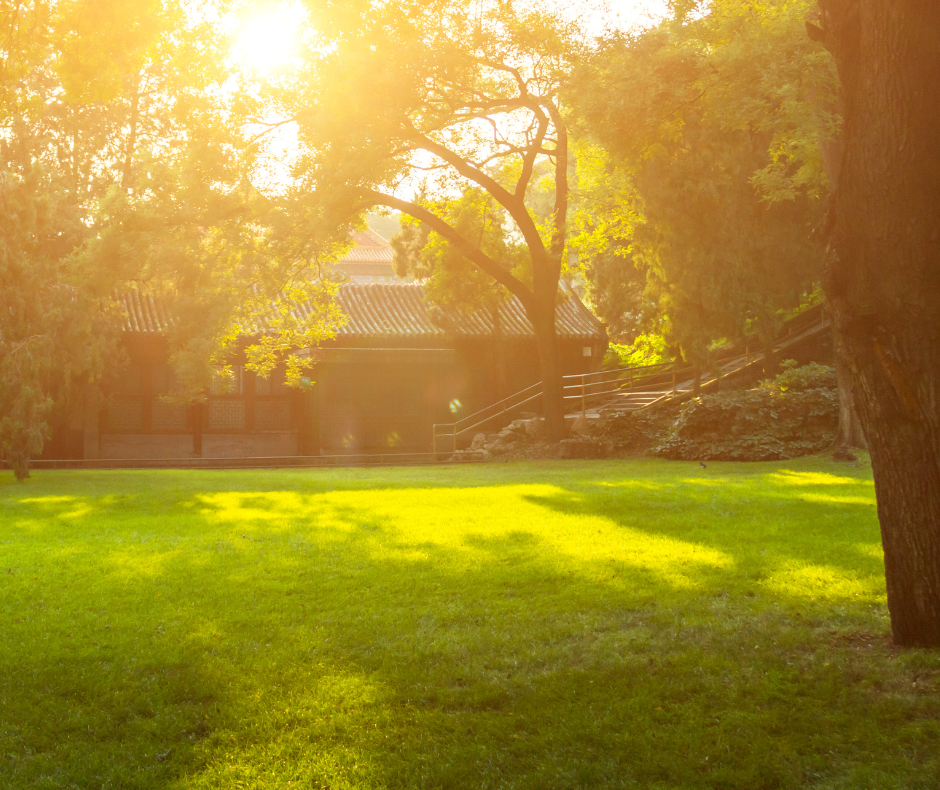Shady Lawn? Here are Some Grasses you might want to Think About!

I bet your thinking about that patch by the side of your house that always seems thin, has some bare soil and you have some weird funky moss growing in it. Why is it like this? and why does it get worse in the fall and winter? The most probable answer is you have a shade problem.
Shade Effect on Grass
Shade affects the overall health and function of grass by limiting the photosynthesis process and consequently carbohydrate production. Carbohydrates are the used by the plant for energy and biomass production in order to deal with recover from environmental stresses like mowing, traffic, heat and cold.
Some C4 grasses are more prone to shade related problems than C3 grasses; apart from slow growing varieties like St. Augustine and Zoysia; because they have a non-saturating growth curve, and this means that most require full sunlight to function well (7+ hours of sunlight per day). C3 grasses have a different photosynthetic process that enables them to produce carbohydrates more efficiently from sunlight and in partial shade. Hence, the reason they are deemed shade tolerant. Although grasses growing in shade tend to have other factors to deal with like increased leaf and soil wetness and lack of air movement. These can contribute to insect and disease occurrence and competition from other plants like moss.
Physical Characteristics of Grass in Shade

Grass growing in shade will grow slower and will grow more elongated with thinner leaves. Because of continued shade and lack of photosynthesis, the grass reduces in density and bare spots appear. If you cut these areas at the same height as the rest of your lawn, they will look stemmy, scalped and now you’ve opened up the soil for weed, algae and moss invasion. Raise the height of cut in shady areas, even by a 1/4 inch! This will allow the plant to capture more light by having more leaf and giving it a chance instead of sodding it every couple of years.
Cool Season Grasses for Shade
A blended sward is better for cool season grasses in shade. This will give the shaded are the best chance of success. These grasses can be bought in blended bags, or you can try to find them individually.
Poa Supina: this is a great shady grass that can tolerate lower mowing heights and can withstand up to a 90% reduction in direct sunlight, thrives in high traffic areas/compacted areas, excellent cold tolerance and forms a tight sward. Can be mowed at 1.5″
Black Beauty Tall Fescue: Can be mowed as low as 2 inches and has a deep fibrous root system, lovely dark green color with a bluegrass sized leaf blade, can handle heavy shade and traffic. Does grow a little bit faster than other plants in shade.
Armada and Bewitched Kentucky Bluegrass: early spring green up with excellent shade tolerance, can be mowed at 0.5 inch and is very disease tolerant to dollar spot and rust. has a dark green color with a medium fine leaf texture.
Jasper 2 Creeping Red Fescue: This is a slow growing grass that has excellent shade tolerance an d avery fine leaf texture. Is more of a low maintenance grass that can be mowed as low a s1.5 inches. Dark green color and has good disease resistance.
Spartan 2 Hard Fescue: is a shade tolerant grass with a high density that can help to prevent weed invasion. It has a slow growth rate, high disease resistance, very fine leaf texture and medium dark green color.
Winward Chewings Fescue: very fine textured grass that can be mown to 1.5 inch, is great for low fertility acid soils that has very good dollar spot resistance.
Warm Season Grasses for Shade

The only two warm season grasses that do remotely well in shade are Zoysias and St. Augustine, Bermuda tiftuf is the most shade tolerant of the Bermudas but still don’t hold a candle to the other two. Let’s preface the warm season selection by saying it is highly unlikely that a grass that is being promoted as only needing less than 4 hours of sunlight will survive and do well in the long term. If you have a shade spot with less than 4 hours of direct sunlight, I suggest you hardscape it. Not enough carbohydrates are produces for the plant to sustain life with less than 4 hours of sunlight.
Zeon Zoysia: Most shade tolerant out of all the Zoysias, needs 4+hrs sunlight per day, its drought tolerant and has a soft leaf texture that is fine which is ideal underfoot. Has an emerald green look.
Emerald Zoysia: This is the slowest growing variety of zoysia and coincides with it being shade tolerant. It is also cold and drought tolerant and has a dark green texture. Has an emerald green color and fine leaf texture.
Palmetto St. Augustine: This is one of the most popular grasses out there due to it being shade, heat, cold, drought and frost tolerant. It also can grow in a variety of soils and develops a deep root system. Leaf blade is finer compared to other St. Augustine’s and has a dark green color. Should be mowed between 1.5 – 2.5 inches.
CitraBlue St. Augustine: Newer form of St. Augustine developed from through research at the University of Florida. Comparable shade tolerance to Palmetto and has an improved resistance against disease. Has a tighter canopy which helps with weed invasion. Has a medium blade with and has a blue hue and should be mowed between 2.5 – 3 inches. Home – CitraBlue® St. Augustine
Tags
© 2023 LaPageBrands, LLC. All rights reserved.

